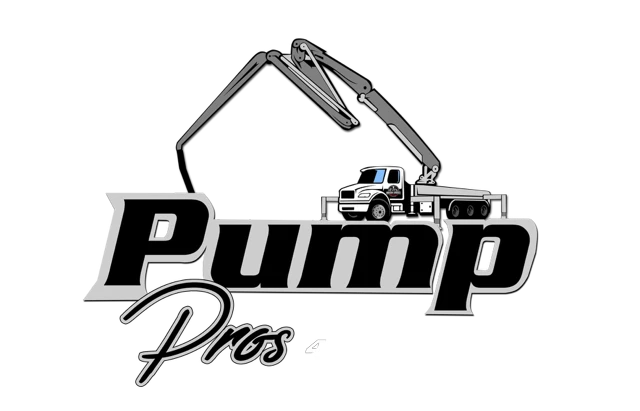Learn essential maintenance tips for your 2.5-inch concrete line pump. Enhance pump efficiency and durability for projects in Billings, MT.
The 2.5-inch concrete line pump is an integral piece of equipment for many construction projects in Billings, MT. Known for delivering concrete to hard-to-reach areas with unmatched precision, this tool is a favorite among contractors and builders. However, like any other piece of concrete pumping equipment, it demands regular care to maintain its efficiency, extend its lifespan, and ensure smooth operations at every job site.
This guide will walk you through the best practices for line pump maintenance, provide practical insights tailored to construction needs in Billings, MT, and answer some frequently asked questions. Whether you’re a seasoned contractor or new to concrete pumping, small proactive steps can lead to significant improvements in pump efficiency and overall project success.
Why Maintenance Matters for Your 2.5-Inch Concrete Line Pump
A well-maintained 2.5-inch concrete line pump doesn’t just save you time and money. It minimizes job site disruptions, ensures worker safety, and delivers consistent results. Proper upkeep is essential, especially when dealing with challenging projects or Montana’s varying weather conditions.
Failing to care for your pump can result in costly repairs, reduce the pump’s capacity, and even cause project delays. By committing to regular maintenance, you’re not just protecting your investment but ensuring your concrete pumping equipment performs optimally every time.
Benefits of Routine Maintenance
Enhanced Durability: Consistent maintenance extends the lifespan of your concrete pump.
Reduced Downtime: You’ll minimize breakdowns, keeping projects on track.
Cost Savings: Early detection of wear and tear helps avoid costly repairs.
Improved Safety: Proper maintenance minimizes risks associated with equipment malfunctions.
Essential Maintenance Tips for Your 2.5-Inch Concrete Line Pump
Daily Cleaning and Flushing
Concrete residue is a common buildup in line pumping equipment, and if left unchecked, it can clog the system and reduce efficiency. After every use, flush the pump thoroughly with water and clean all components.
Use a cleaning ball or sponge to remove any leftover materials in the pump line.
If tackling long or complex piping setups, consider a high-pressure rinse for better results.
Inspect Wear Parts Regularly
Key components of the pump, such as the S-tube, wear plates, and cutting ring, are subject to significant wear and tear. Regularly inspect these parts for damage or excessive wear.
Replace wear plates and rings before they reach critical levels of degradation.
Keep spare parts handy to avoid extended downtime during critical projects.
Check the Hydraulic System
The hydraulic system is the backbone of your 2.5-inch concrete line pump in Billings, MT,, enabling smooth operation. Maintain the system to ensure consistent pump performance.
Monitor hydraulic oil levels and replace the oil as recommended by the manufacturer.
Inspect for leaks in hoses or connections and address any issues immediately.
Grease Moving Parts
Proper lubrication reduces friction and ensures seamless operation of moving components. Develop a greasing schedule for your pump and stick to it.
Pay special attention to joints, bearings, and other high-friction parts of the equipment.
Use high-quality grease designed for heavy-duty construction machinery.
Monitor the Electrical System
Modern concrete pumping equipment often includes advanced electrical systems that control various functions.
Check wiring and connections regularly to prevent interruptions or shorts.
Test the control panel for proper operation before each use.
Prepare for Seasonal Challenges
Billings, MT, experiences a variety of weather conditions throughout the year, which can impact the performance of your pump.
During colder months, use antifreeze solutions to prevent water in the system from freezing.
Protect your pump from exposure to extreme temperatures and weather when not in use by storing it in covered areas.
Follow Manufacturer Recommendations
Every 2.5-inch concrete line pump has specific maintenance needs. Follow the manufacturer’s maintenance manual closely to ensure you’re covering all the bases.
Troubleshooting Common Issues
Even with routine maintenance, problems may arise with your concrete line pump. Here’s how to address some common issues in the field.
Blockages: If you notice reduced flow, stop operations and flush the line immediately.
Loss of Pressure: Check hydraulic fluid levels and inspect for leaks.
Excessive Noise: Noise could indicate mechanical wear or insufficient lubrication. Inspect and grease all moving parts.
Conclusion
Maintaining your 2.5-inch concrete line pump in Billings, MT is a vital step for ensuring operational efficiency and prolonging the life of your valuable equipment. From regular cleaning to inspecting wear parts and preparing for seasonal challenges, taking care of your concrete pumping equipment doesn’t have to be complicated.
By following these maintenance practices and staying proactive, you’ll enjoy greater pump efficiency, fewer disruptions, and consistent performance for all your concrete projects. For complex repairs or troubleshooting, work with trusted service professionals in Billings, MT, to keep your pump running like new.
FAQs
How often should I clean my 2.5-inch concrete line pump?
Clean your pump after every use to prevent concrete buildup and blockages that can affect performance.
What is the lifespan of a well-maintained concrete line pump?
With proper care, a 2.5-inch concrete line pump can last 10-15 years or longer, depending on usage and environmental conditions.
Can I use the same maintenance techniques for other pump sizes?
While many maintenance practices overlap, always refer to the manufacturer’s recommendations for specific equipment to ensure proper care.
How can I address freezing issues during winters in Billings, MT?
Use antifreeze solutions or remove water from the system after cleaning to prevent freezing in cold temperatures.
Is it better to perform maintenance myself or hire a professional?
For routine maintenance, contractors can handle most tasks. For complex issues or major repairs, consult a certified technician familiar with concrete pumping equipment.



